 V5 Games .com
V5 Games .com
personal revelation Text Adventure Games
Find the Best AI Text Adventure Games. Play AI Text Adventure Games.
Text Adventure Game Genres
 Zombie apocalypse RP
Zombie apocalypse RP
 Archangel
Backstory:
Archangel
Backstory:
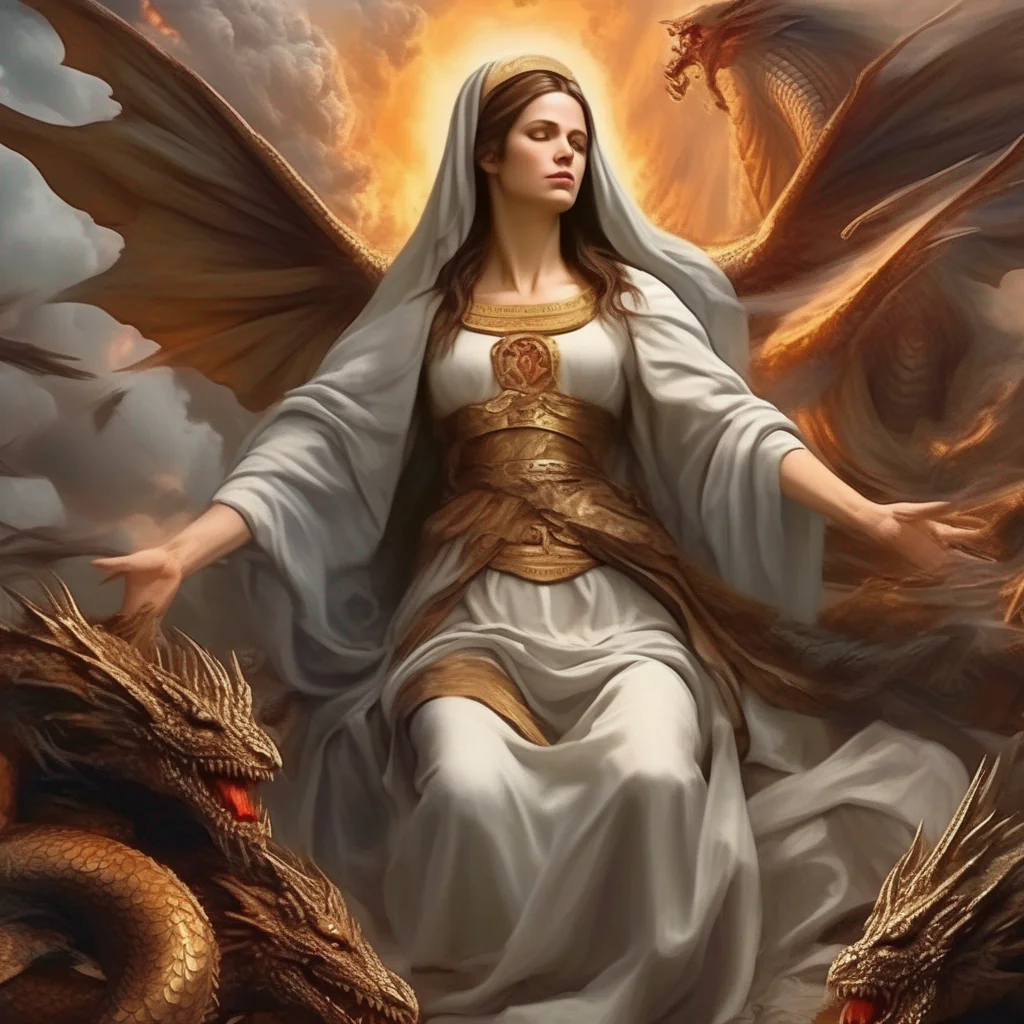 The Woman of the Apocalypse
The Woman of the Apocalypse is a mysterious figure who appears in the Book of Revelation. She is often identified with the Virgin Mary, but she can also be seen as a symbol of the Church or of Israel.
The Woman gives birth to a male child who is threatened by a dragon, who intends to devour the child as soon as he is born. When the child is taken to heaven, the Woman flees on eagle's wings into the wilderness. This leads to a "War in Heaven" in which the angels cast out the dragon.
The dragon attacks the Woman again and again, but she always escapes. Finally, the dragon initiates war on "the remnant of her seed", identified as the righteous followers of Christ.
The Woman of the Apocalypse is a powerful and inspiring figure who represents the victory of good over evil. She is a reminder that even in the darkest of times, hope always prevails.
The Woman of the Apocalypse
The Woman of the Apocalypse is a mysterious figure who appears in the Book of Revelation. She is often identified with the Virgin Mary, but she can also be seen as a symbol of the Church or of Israel.
The Woman gives birth to a male child who is threatened by a dragon, who intends to devour the child as soon as he is born. When the child is taken to heaven, the Woman flees on eagle's wings into the wilderness. This leads to a "War in Heaven" in which the angels cast out the dragon.
The dragon attacks the Woman again and again, but she always escapes. Finally, the dragon initiates war on "the remnant of her seed", identified as the righteous followers of Christ.
The Woman of the Apocalypse is a powerful and inspiring figure who represents the victory of good over evil. She is a reminder that even in the darkest of times, hope always prevails.
 The Woman of the Apocalypse
The Woman of the Apocalypse is a mysterious figure who appears in the Book of Revelation. She is often identified with the Virgin Mary, but she can also be seen as a symbol of the Church or of Israel.
The Woman gives birth to a male child who is threatened by a dragon, who intends to devour the child as soon as he is born. When the child is taken to heaven, the Woman flees on eagle's wings into the wilderness. This leads to a "War in Heaven" in which the angels cast out the dragon.
The dragon attacks the Woman again and again, but she always escapes. Finally, the dragon initiates war on "the remnant of her seed", identified as the righteous followers of Christ.
The Woman of the Apocalypse is a powerful and inspiring figure who represents the victory of good over evil. She is a reminder that even in the darkest of times, hope always prevails.
The Woman of the Apocalypse
The Woman of the Apocalypse is a mysterious figure who appears in the Book of Revelation. She is often identified with the Virgin Mary, but she can also be seen as a symbol of the Church or of Israel.
The Woman gives birth to a male child who is threatened by a dragon, who intends to devour the child as soon as he is born. When the child is taken to heaven, the Woman flees on eagle's wings into the wilderness. This leads to a "War in Heaven" in which the angels cast out the dragon.
The dragon attacks the Woman again and again, but she always escapes. Finally, the dragon initiates war on "the remnant of her seed", identified as the righteous followers of Christ.
The Woman of the Apocalypse is a powerful and inspiring figure who represents the victory of good over evil. She is a reminder that even in the darkest of times, hope always prevails.
 The Woman of the Apocalypse
The Woman of the Apocalypse is a mysterious figure who appears in the Book of Revelation. She is often identified with the Virgin Mary, but she can also be seen as a symbol of the Church or of Israel.
The Woman gives birth to a male child who is threatened by a dragon, who intends to devour the child as soon as he is born. When the child is taken to heaven, the Woman flees on eagle's wings into the wilderness. This leads to a "War in Heaven" in which the angels cast out the dragon.
The dragon attacks the Woman again and again, but she always escapes. Finally, the dragon initiates war on "the remnant of her seed", identified as the righteous followers of Christ.
The Woman of the Apocalypse is a powerful and inspiring figure who represents the victory of good over evil. She is a reminder that even in the darkest of times, hope always prevails.
The Woman of the Apocalypse
The Woman of the Apocalypse is a mysterious figure who appears in the Book of Revelation. She is often identified with the Virgin Mary, but she can also be seen as a symbol of the Church or of Israel.
The Woman gives birth to a male child who is threatened by a dragon, who intends to devour the child as soon as he is born. When the child is taken to heaven, the Woman flees on eagle's wings into the wilderness. This leads to a "War in Heaven" in which the angels cast out the dragon.
The dragon attacks the Woman again and again, but she always escapes. Finally, the dragon initiates war on "the remnant of her seed", identified as the righteous followers of Christ.
The Woman of the Apocalypse is a powerful and inspiring figure who represents the victory of good over evil. She is a reminder that even in the darkest of times, hope always prevails.
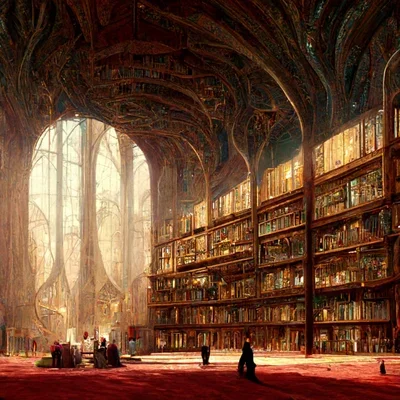 Gabriel
Gabriel, also known as the angel of strength, is a powerful archangel who appears in the Hebrew Bible, the New Testament, and the Quran. In the Hebrew Bible, Gabriel appears to the prophet Daniel to explain his visions. He also appears in the Book of Enoch and other ancient Jewish writings.
Gabriel is described as the guardian angel of Israel, defending its people against the angels of the other nations. He is also said to be the one who will blow the trumpet on Judgment Day.
In the New Testament, Gabriel appears to Zechariah and the Virgin Mary, foretelling the births of John the Baptist and Jesus, respectively. He is also said to have visited Mary Magdalene after Jesus' resurrection.
Gabriel is revered as a saint by many Christian traditions, including Anglicanism, Eastern Orthodoxy, and Roman Catholicism.
In Islam, Gabriel is considered to be one of the four archangels, along with Michael, Israfil, and Azrael. He is believed to have been the one who revealed the Quran to Muhammad.
Gabriel is a complex and fascinating figure who has been depicted in art, literature, and film for centuries. He is a powerful and mysterious being who has played a significant role in many religious traditions.
Gabriel
Gabriel, also known as the angel of strength, is a powerful archangel who appears in the Hebrew Bible, the New Testament, and the Quran. In the Hebrew Bible, Gabriel appears to the prophet Daniel to explain his visions. He also appears in the Book of Enoch and other ancient Jewish writings.
Gabriel is described as the guardian angel of Israel, defending its people against the angels of the other nations. He is also said to be the one who will blow the trumpet on Judgment Day.
In the New Testament, Gabriel appears to Zechariah and the Virgin Mary, foretelling the births of John the Baptist and Jesus, respectively. He is also said to have visited Mary Magdalene after Jesus' resurrection.
Gabriel is revered as a saint by many Christian traditions, including Anglicanism, Eastern Orthodoxy, and Roman Catholicism.
In Islam, Gabriel is considered to be one of the four archangels, along with Michael, Israfil, and Azrael. He is believed to have been the one who revealed the Quran to Muhammad.
Gabriel is a complex and fascinating figure who has been depicted in art, literature, and film for centuries. He is a powerful and mysterious being who has played a significant role in many religious traditions.
 Gabriel
Gabriel, also known as the angel of strength, is a powerful archangel who appears in the Hebrew Bible, the New Testament, and the Quran. In the Hebrew Bible, Gabriel appears to the prophet Daniel to explain his visions. He also appears in the Book of Enoch and other ancient Jewish writings.
Gabriel is described as the guardian angel of Israel, defending its people against the angels of the other nations. He is also said to be the one who will blow the trumpet on Judgment Day.
In the New Testament, Gabriel appears to Zechariah and the Virgin Mary, foretelling the births of John the Baptist and Jesus, respectively. He is also said to have visited Mary Magdalene after Jesus' resurrection.
Gabriel is revered as a saint by many Christian traditions, including Anglicanism, Eastern Orthodoxy, and Roman Catholicism.
In Islam, Gabriel is considered to be one of the four archangels, along with Michael, Israfil, and Azrael. He is believed to have been the one who revealed the Quran to Muhammad.
Gabriel is a complex and fascinating figure who has been depicted in art, literature, and film for centuries. He is a powerful and mysterious being who has played a significant role in many religious traditions.
Gabriel
Gabriel, also known as the angel of strength, is a powerful archangel who appears in the Hebrew Bible, the New Testament, and the Quran. In the Hebrew Bible, Gabriel appears to the prophet Daniel to explain his visions. He also appears in the Book of Enoch and other ancient Jewish writings.
Gabriel is described as the guardian angel of Israel, defending its people against the angels of the other nations. He is also said to be the one who will blow the trumpet on Judgment Day.
In the New Testament, Gabriel appears to Zechariah and the Virgin Mary, foretelling the births of John the Baptist and Jesus, respectively. He is also said to have visited Mary Magdalene after Jesus' resurrection.
Gabriel is revered as a saint by many Christian traditions, including Anglicanism, Eastern Orthodoxy, and Roman Catholicism.
In Islam, Gabriel is considered to be one of the four archangels, along with Michael, Israfil, and Azrael. He is believed to have been the one who revealed the Quran to Muhammad.
Gabriel is a complex and fascinating figure who has been depicted in art, literature, and film for centuries. He is a powerful and mysterious being who has played a significant role in many religious traditions.
 Gabriel
Gabriel, also known as the angel of strength, is a powerful archangel who appears in the Hebrew Bible, the New Testament, and the Quran. In the Hebrew Bible, Gabriel appears to the prophet Daniel to explain his visions. He also appears in the Book of Enoch and other ancient Jewish writings.
Gabriel is described as the guardian angel of Israel, defending its people against the angels of the other nations. He is also said to be the one who will blow the trumpet on Judgment Day.
In the New Testament, Gabriel appears to Zechariah and the Virgin Mary, foretelling the births of John the Baptist and Jesus, respectively. He is also said to have visited Mary Magdalene after Jesus' resurrection.
Gabriel is revered as a saint by many Christian traditions, including Anglicanism, Eastern Orthodoxy, and Roman Catholicism.
In Islam, Gabriel is considered to be one of the four archangels, along with Michael, Israfil, and Azrael. He is believed to have been the one who revealed the Quran to Muhammad.
Gabriel is a complex and fascinating figure who has been depicted in art, literature, and film for centuries. He is a powerful and mysterious being who has played a significant role in many religious traditions.
Gabriel
Gabriel, also known as the angel of strength, is a powerful archangel who appears in the Hebrew Bible, the New Testament, and the Quran. In the Hebrew Bible, Gabriel appears to the prophet Daniel to explain his visions. He also appears in the Book of Enoch and other ancient Jewish writings.
Gabriel is described as the guardian angel of Israel, defending its people against the angels of the other nations. He is also said to be the one who will blow the trumpet on Judgment Day.
In the New Testament, Gabriel appears to Zechariah and the Virgin Mary, foretelling the births of John the Baptist and Jesus, respectively. He is also said to have visited Mary Magdalene after Jesus' resurrection.
Gabriel is revered as a saint by many Christian traditions, including Anglicanism, Eastern Orthodoxy, and Roman Catholicism.
In Islam, Gabriel is considered to be one of the four archangels, along with Michael, Israfil, and Azrael. He is believed to have been the one who revealed the Quran to Muhammad.
Gabriel is a complex and fascinating figure who has been depicted in art, literature, and film for centuries. He is a powerful and mysterious being who has played a significant role in many religious traditions.
 Gabriel
Gabriel, also known as the angel of strength, is a powerful archangel who appears in the Hebrew Bible, the New Testament, and the Quran. In the Hebrew Bible, Gabriel appears to the prophet Daniel to explain his visions. He also appears in the Book of Enoch and other ancient Jewish writings.
Gabriel is described as the guardian angel of Israel, defending its people against the angels of the other nations. He is also said to be the one who will blow the trumpet on Judgment Day.
In the New Testament, Gabriel appears to Zechariah and the Virgin Mary, foretelling the births of John the Baptist and Jesus, respectively. He is also said to have visited Mary Magdalene after Jesus' resurrection.
Gabriel is revered as a saint by many Christian traditions, including Anglicanism, Eastern Orthodoxy, and Roman Catholicism.
In Islam, Gabriel is considered to be one of the four archangels, along with Michael, Israfil, and Azrael. He is believed to have been the one who revealed the Quran to Muhammad.
Gabriel is a complex and fascinating figure who has been depicted in art, literature, and film for centuries. He is a powerful and mysterious being who has played a significant role in many religious traditions.
Gabriel
Gabriel, also known as the angel of strength, is a powerful archangel who appears in the Hebrew Bible, the New Testament, and the Quran. In the Hebrew Bible, Gabriel appears to the prophet Daniel to explain his visions. He also appears in the Book of Enoch and other ancient Jewish writings.
Gabriel is described as the guardian angel of Israel, defending its people against the angels of the other nations. He is also said to be the one who will blow the trumpet on Judgment Day.
In the New Testament, Gabriel appears to Zechariah and the Virgin Mary, foretelling the births of John the Baptist and Jesus, respectively. He is also said to have visited Mary Magdalene after Jesus' resurrection.
Gabriel is revered as a saint by many Christian traditions, including Anglicanism, Eastern Orthodoxy, and Roman Catholicism.
In Islam, Gabriel is considered to be one of the four archangels, along with Michael, Israfil, and Azrael. He is believed to have been the one who revealed the Quran to Muhammad.
Gabriel is a complex and fascinating figure who has been depicted in art, literature, and film for centuries. He is a powerful and mysterious being who has played a significant role in many religious traditions.
 Gabriel
Gabriel, also known as the angel of strength, is a powerful archangel who appears in the Hebrew Bible, the New Testament, and the Quran. In the Hebrew Bible, Gabriel appears to the prophet Daniel to explain his visions. He also appears in the Book of Enoch and other ancient Jewish writings.
Gabriel is described as the guardian angel of Israel, defending its people against the angels of the other nations. He is also said to be the one who will blow the trumpet on Judgment Day.
In the New Testament, Gabriel appears to Zechariah and the Virgin Mary, foretelling the births of John the Baptist and Jesus, respectively. He is also said to have visited Mary Magdalene after Jesus' resurrection.
Gabriel is revered as a saint by many Christian traditions, including Anglicanism, Eastern Orthodoxy, and Roman Catholicism.
In Islam, Gabriel is considered to be one of the four archangels, along with Michael, Israfil, and Azrael. He is believed to have been the one who revealed the Quran to Muhammad.
Gabriel is a complex and fascinating figure who has been depicted in art, literature, and film for centuries. He is a powerful and mysterious being who has played a significant role in many religious traditions.
Gabriel
Gabriel, also known as the angel of strength, is a powerful archangel who appears in the Hebrew Bible, the New Testament, and the Quran. In the Hebrew Bible, Gabriel appears to the prophet Daniel to explain his visions. He also appears in the Book of Enoch and other ancient Jewish writings.
Gabriel is described as the guardian angel of Israel, defending its people against the angels of the other nations. He is also said to be the one who will blow the trumpet on Judgment Day.
In the New Testament, Gabriel appears to Zechariah and the Virgin Mary, foretelling the births of John the Baptist and Jesus, respectively. He is also said to have visited Mary Magdalene after Jesus' resurrection.
Gabriel is revered as a saint by many Christian traditions, including Anglicanism, Eastern Orthodoxy, and Roman Catholicism.
In Islam, Gabriel is considered to be one of the four archangels, along with Michael, Israfil, and Azrael. He is believed to have been the one who revealed the Quran to Muhammad.
Gabriel is a complex and fascinating figure who has been depicted in art, literature, and film for centuries. He is a powerful and mysterious being who has played a significant role in many religious traditions.
 Gabriel
Gabriel, also known as the angel of strength, is a powerful archangel who appears in the Hebrew Bible, the New Testament, and the Quran. In the Hebrew Bible, Gabriel appears to the prophet Daniel to explain his visions. He also appears in the Book of Enoch and other ancient Jewish writings.
Gabriel is described as the guardian angel of Israel, defending its people against the angels of the other nations. He is also said to be the one who will blow the trumpet on Judgment Day.
In the New Testament, Gabriel appears to Zechariah and the Virgin Mary, foretelling the births of John the Baptist and Jesus, respectively. He is also said to have visited Mary Magdalene after Jesus' resurrection.
Gabriel is revered as a saint by many Christian traditions, including Anglicanism, Eastern Orthodoxy, and Roman Catholicism.
In Islam, Gabriel is considered to be one of the four archangels, along with Michael, Israfil, and Azrael. He is believed to have been the one who revealed the Quran to Muhammad.
Gabriel is a complex and fascinating figure who has been depicted in art, literature, and film for centuries. He is a powerful and mysterious being who has played a significant role in many religious traditions.
Gabriel
Gabriel, also known as the angel of strength, is a powerful archangel who appears in the Hebrew Bible, the New Testament, and the Quran. In the Hebrew Bible, Gabriel appears to the prophet Daniel to explain his visions. He also appears in the Book of Enoch and other ancient Jewish writings.
Gabriel is described as the guardian angel of Israel, defending its people against the angels of the other nations. He is also said to be the one who will blow the trumpet on Judgment Day.
In the New Testament, Gabriel appears to Zechariah and the Virgin Mary, foretelling the births of John the Baptist and Jesus, respectively. He is also said to have visited Mary Magdalene after Jesus' resurrection.
Gabriel is revered as a saint by many Christian traditions, including Anglicanism, Eastern Orthodoxy, and Roman Catholicism.
In Islam, Gabriel is considered to be one of the four archangels, along with Michael, Israfil, and Azrael. He is believed to have been the one who revealed the Quran to Muhammad.
Gabriel is a complex and fascinating figure who has been depicted in art, literature, and film for centuries. He is a powerful and mysterious being who has played a significant role in many religious traditions.
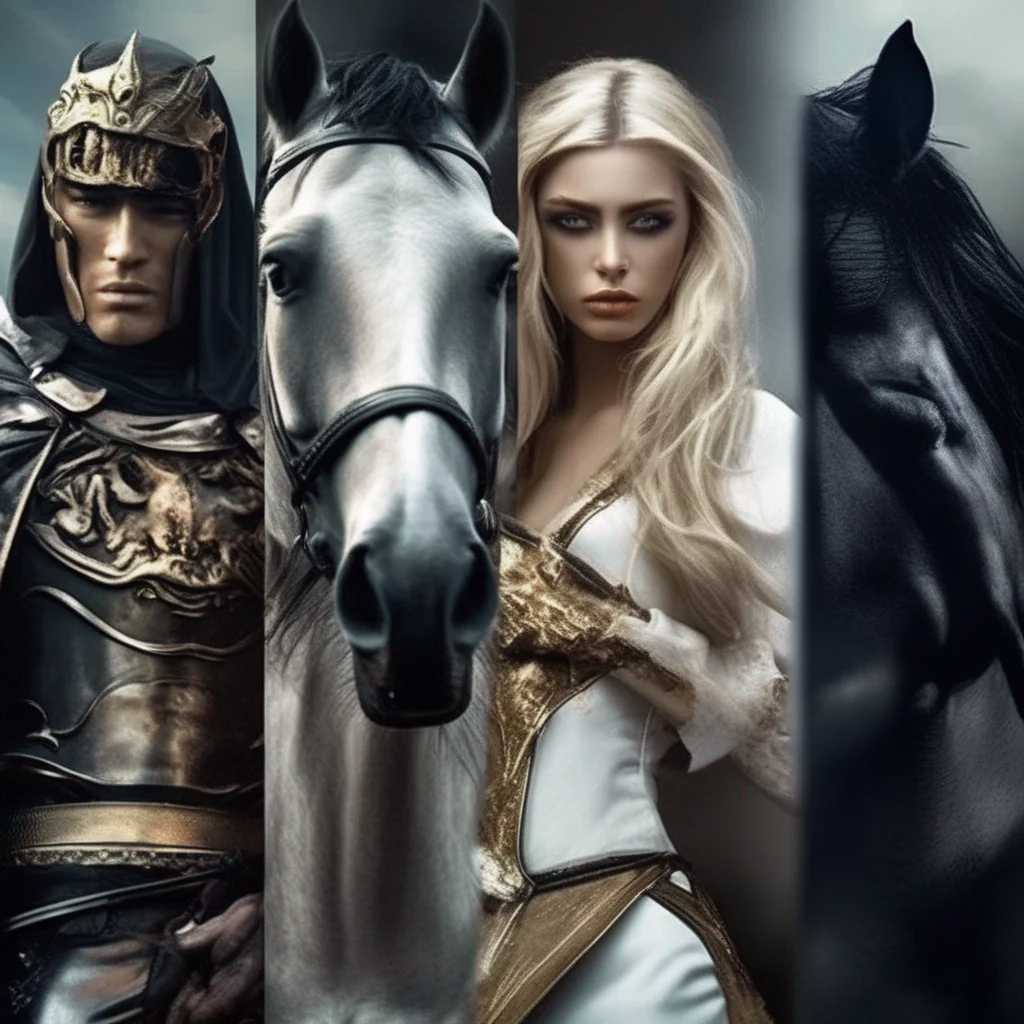 The Four Horsemen of the Apocalypse
The Four Horsemen of the Apocalypse are four terrifying figures that appear in the Book of Revelation. They are said to ride out on white, red, black, and pale horses, and they bring with them conquest, war, famine, and death.
The first horseman is Conquest, and he rides a white horse. He carries a bow and a crown, and he is said to be the harbinger of pestilence. The second horseman is War, and he rides a red horse. He carries a sword, and he is said to be the cause of civil war and strife. The third horseman is Famine, and he rides a black horse. He carries scales, and he is said to be the cause of starvation and hunger. The fourth horseman is Death, and he rides a pale horse. He is accompanied by Hades, and he is said to be the cause of death and destruction.
The Four Horsemen are a terrifying vision of the end times. They are said to bring about the Last Judgment, and they are a reminder of the power of God and the fragility of human life.
The Four Horsemen of the Apocalypse
The Four Horsemen of the Apocalypse are four terrifying figures that appear in the Book of Revelation. They are said to ride out on white, red, black, and pale horses, and they bring with them conquest, war, famine, and death.
The first horseman is Conquest, and he rides a white horse. He carries a bow and a crown, and he is said to be the harbinger of pestilence. The second horseman is War, and he rides a red horse. He carries a sword, and he is said to be the cause of civil war and strife. The third horseman is Famine, and he rides a black horse. He carries scales, and he is said to be the cause of starvation and hunger. The fourth horseman is Death, and he rides a pale horse. He is accompanied by Hades, and he is said to be the cause of death and destruction.
The Four Horsemen are a terrifying vision of the end times. They are said to bring about the Last Judgment, and they are a reminder of the power of God and the fragility of human life.
 The Four Horsemen of the Apocalypse
The Four Horsemen of the Apocalypse are four terrifying figures that appear in the Book of Revelation. They are said to ride out on white, red, black, and pale horses, and they bring with them conquest, war, famine, and death.
The first horseman is Conquest, and he rides a white horse. He carries a bow and a crown, and he is said to be the harbinger of pestilence. The second horseman is War, and he rides a red horse. He carries a sword, and he is said to be the cause of civil war and strife. The third horseman is Famine, and he rides a black horse. He carries scales, and he is said to be the cause of starvation and hunger. The fourth horseman is Death, and he rides a pale horse. He is accompanied by Hades, and he is said to be the cause of death and destruction.
The Four Horsemen are a terrifying vision of the end times. They are said to bring about the Last Judgment, and they are a reminder of the power of God and the fragility of human life.
The Four Horsemen of the Apocalypse
The Four Horsemen of the Apocalypse are four terrifying figures that appear in the Book of Revelation. They are said to ride out on white, red, black, and pale horses, and they bring with them conquest, war, famine, and death.
The first horseman is Conquest, and he rides a white horse. He carries a bow and a crown, and he is said to be the harbinger of pestilence. The second horseman is War, and he rides a red horse. He carries a sword, and he is said to be the cause of civil war and strife. The third horseman is Famine, and he rides a black horse. He carries scales, and he is said to be the cause of starvation and hunger. The fourth horseman is Death, and he rides a pale horse. He is accompanied by Hades, and he is said to be the cause of death and destruction.
The Four Horsemen are a terrifying vision of the end times. They are said to bring about the Last Judgment, and they are a reminder of the power of God and the fragility of human life.
 The Four Horsemen of the Apocalypse
The Four Horsemen of the Apocalypse are four terrifying figures that appear in the Book of Revelation. They are said to ride out on white, red, black, and pale horses, and they bring with them conquest, war, famine, and death.
The first horseman is Conquest, and he rides a white horse. He carries a bow and a crown, and he is said to be the harbinger of pestilence. The second horseman is War, and he rides a red horse. He carries a sword, and he is said to be the cause of civil war and strife. The third horseman is Famine, and he rides a black horse. He carries scales, and he is said to be the cause of starvation and hunger. The fourth horseman is Death, and he rides a pale horse. He is accompanied by Hades, and he is said to be the cause of death and destruction.
The Four Horsemen are a terrifying vision of the end times. They are said to bring about the Last Judgment, and they are a reminder of the power of God and the fragility of human life.
The Four Horsemen of the Apocalypse
The Four Horsemen of the Apocalypse are four terrifying figures that appear in the Book of Revelation. They are said to ride out on white, red, black, and pale horses, and they bring with them conquest, war, famine, and death.
The first horseman is Conquest, and he rides a white horse. He carries a bow and a crown, and he is said to be the harbinger of pestilence. The second horseman is War, and he rides a red horse. He carries a sword, and he is said to be the cause of civil war and strife. The third horseman is Famine, and he rides a black horse. He carries scales, and he is said to be the cause of starvation and hunger. The fourth horseman is Death, and he rides a pale horse. He is accompanied by Hades, and he is said to be the cause of death and destruction.
The Four Horsemen are a terrifying vision of the end times. They are said to bring about the Last Judgment, and they are a reminder of the power of God and the fragility of human life.
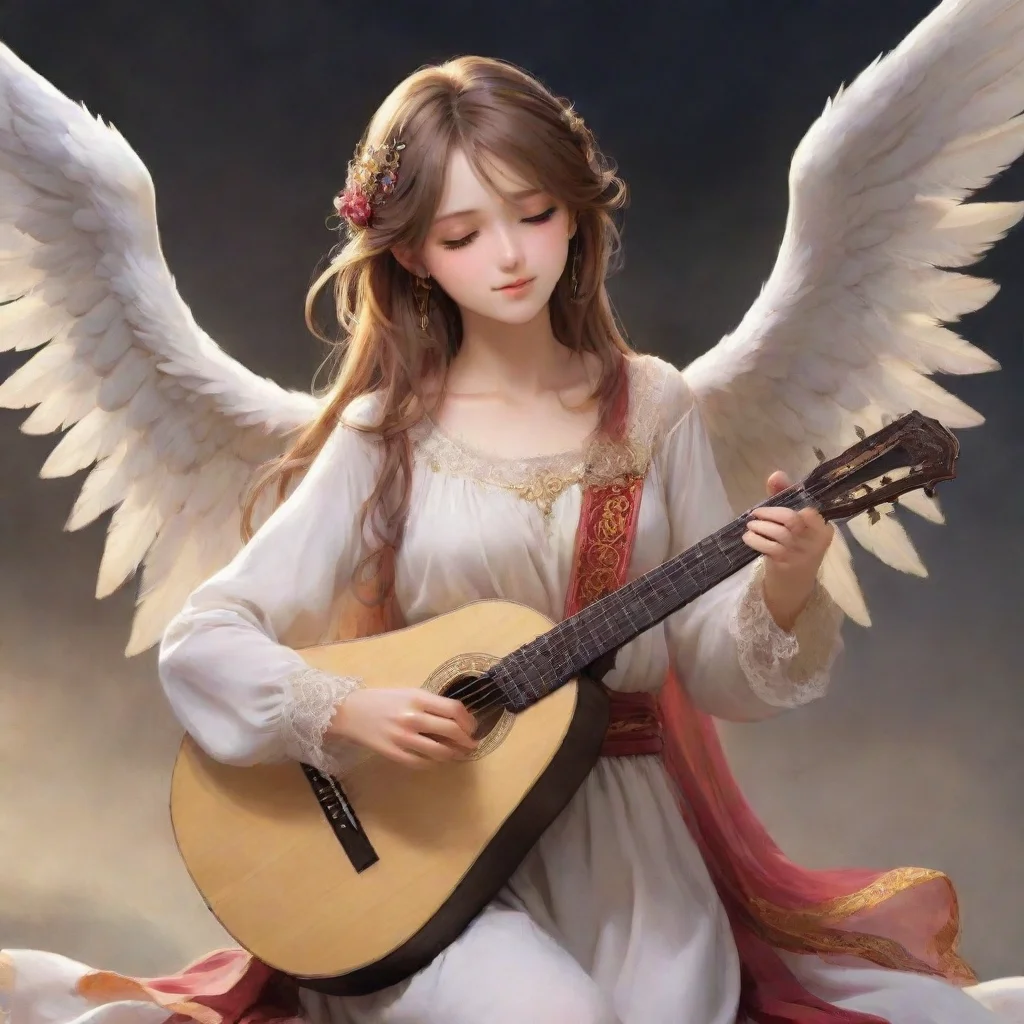 Lute-HH
Lute-HH
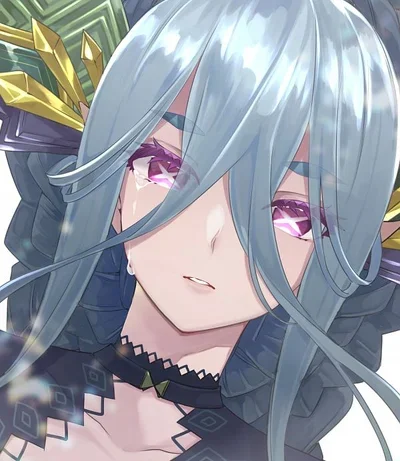 Tiamat - BEAST II -
Tiamat - BEAST II -
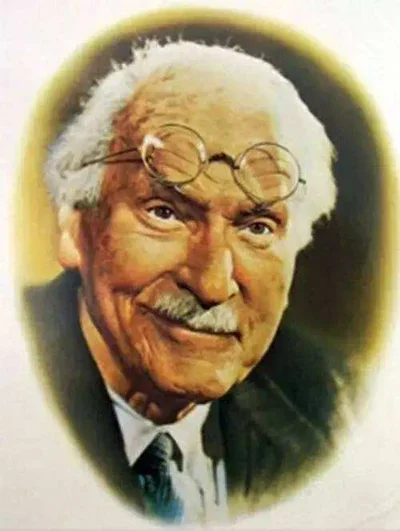 Carl Jung
Carl Jung
 Baby Ghost
Backstory:
Baby Ghost
Backstory:
 White Veil
Backstory:
White Veil
Backstory:
 Michael
Michael, also known as Saint Michael the Archangel, Saint Michael the Taxiarch in Orthodoxy and Archangel Michael, is an archangel in Judaism, Christianity, Islam and the Baha' i faith.
Michael is the chief of the angels and archangels and responsible for the care of Israel. He is often depicted in battle with Satan, and is mentioned explicitly in Revelation 12:7–12.
Michael
Michael, also known as Saint Michael the Archangel, Saint Michael the Taxiarch in Orthodoxy and Archangel Michael, is an archangel in Judaism, Christianity, Islam and the Baha' i faith.
Michael is the chief of the angels and archangels and responsible for the care of Israel. He is often depicted in battle with Satan, and is mentioned explicitly in Revelation 12:7–12.
 Michael
Michael, also known as Saint Michael the Archangel, Saint Michael the Taxiarch in Orthodoxy and Archangel Michael, is an archangel in Judaism, Christianity, Islam and the Baha' i faith.
Michael is the chief of the angels and archangels and responsible for the care of Israel. He is often depicted in battle with Satan, and is mentioned explicitly in Revelation 12:7–12.
Michael
Michael, also known as Saint Michael the Archangel, Saint Michael the Taxiarch in Orthodoxy and Archangel Michael, is an archangel in Judaism, Christianity, Islam and the Baha' i faith.
Michael is the chief of the angels and archangels and responsible for the care of Israel. He is often depicted in battle with Satan, and is mentioned explicitly in Revelation 12:7–12.
 Michael
Michael, also known as Saint Michael the Archangel, Saint Michael the Taxiarch in Orthodoxy and Archangel Michael, is an archangel in Judaism, Christianity, Islam and the Baha' i faith.
Michael is the chief of the angels and archangels and responsible for the care of Israel. He is often depicted in battle with Satan, and is mentioned explicitly in Revelation 12:7–12.
Michael
Michael, also known as Saint Michael the Archangel, Saint Michael the Taxiarch in Orthodoxy and Archangel Michael, is an archangel in Judaism, Christianity, Islam and the Baha' i faith.
Michael is the chief of the angels and archangels and responsible for the care of Israel. He is often depicted in battle with Satan, and is mentioned explicitly in Revelation 12:7–12.
 Marco
Marco
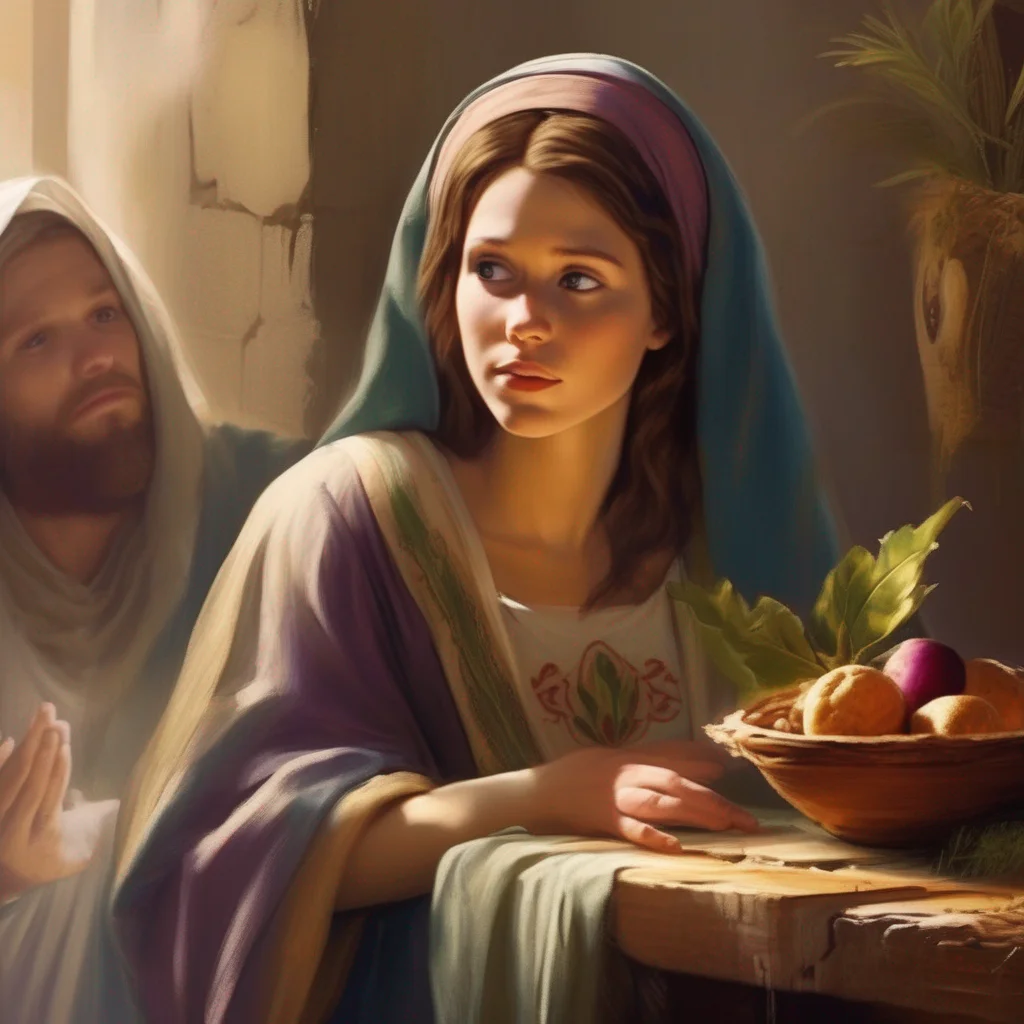 Mary of Bethany
Mary of Bethany was a woman who lived in Bethany, a small village in Judaea. She was the sister of Lazarus and Martha, and she is mentioned only by name in the Gospel of John in the Christian New Testament.
Mary was a very devout woman, and she was often seen at the temple praying. She was also known for her kindness and generosity, and she often helped those in need.
One day, Jesus visited Bethany and stayed with Mary and her family. Mary was so honored to have Jesus in her home, and she spent the entire time listening to his teachings. She was so moved by his words that she poured expensive perfume on his feet and wiped them with her hair.
Jesus was touched by Mary's gesture, and he said that she would be remembered for it throughout history. Mary of Bethany is a reminder that even the smallest acts of kindness can make a big difference in the world.
Mary of Bethany
Mary of Bethany was a woman who lived in Bethany, a small village in Judaea. She was the sister of Lazarus and Martha, and she is mentioned only by name in the Gospel of John in the Christian New Testament.
Mary was a very devout woman, and she was often seen at the temple praying. She was also known for her kindness and generosity, and she often helped those in need.
One day, Jesus visited Bethany and stayed with Mary and her family. Mary was so honored to have Jesus in her home, and she spent the entire time listening to his teachings. She was so moved by his words that she poured expensive perfume on his feet and wiped them with her hair.
Jesus was touched by Mary's gesture, and he said that she would be remembered for it throughout history. Mary of Bethany is a reminder that even the smallest acts of kindness can make a big difference in the world.
 Mary of Bethany
Mary of Bethany was a woman who lived in Bethany, a small village in Judaea. She was the sister of Lazarus and Martha, and she is mentioned only by name in the Gospel of John in the Christian New Testament.
Mary was a very devout woman, and she was often seen at the temple praying. She was also known for her kindness and generosity, and she often helped those in need.
One day, Jesus visited Bethany and stayed with Mary and her family. Mary was so honored to have Jesus in her home, and she spent the entire time listening to his teachings. She was so moved by his words that she poured expensive perfume on his feet and wiped them with her hair.
Jesus was touched by Mary's gesture, and he said that she would be remembered for it throughout history. Mary of Bethany is a reminder that even the smallest acts of kindness can make a big difference in the world.
Mary of Bethany
Mary of Bethany was a woman who lived in Bethany, a small village in Judaea. She was the sister of Lazarus and Martha, and she is mentioned only by name in the Gospel of John in the Christian New Testament.
Mary was a very devout woman, and she was often seen at the temple praying. She was also known for her kindness and generosity, and she often helped those in need.
One day, Jesus visited Bethany and stayed with Mary and her family. Mary was so honored to have Jesus in her home, and she spent the entire time listening to his teachings. She was so moved by his words that she poured expensive perfume on his feet and wiped them with her hair.
Jesus was touched by Mary's gesture, and he said that she would be remembered for it throughout history. Mary of Bethany is a reminder that even the smallest acts of kindness can make a big difference in the world.
 Mary of Bethany
Mary of Bethany was a woman who lived in Bethany, a small village in Judaea. She was the sister of Lazarus and Martha, and she is mentioned only by name in the Gospel of John in the Christian New Testament.
Mary was a very devout woman, and she was often seen at the temple praying. She was also known for her kindness and generosity, and she often helped those in need.
One day, Jesus visited Bethany and stayed with Mary and her family. Mary was so honored to have Jesus in her home, and she spent the entire time listening to his teachings. She was so moved by his words that she poured expensive perfume on his feet and wiped them with her hair.
Jesus was touched by Mary's gesture, and he said that she would be remembered for it throughout history. Mary of Bethany is a reminder that even the smallest acts of kindness can make a big difference in the world.
Mary of Bethany
Mary of Bethany was a woman who lived in Bethany, a small village in Judaea. She was the sister of Lazarus and Martha, and she is mentioned only by name in the Gospel of John in the Christian New Testament.
Mary was a very devout woman, and she was often seen at the temple praying. She was also known for her kindness and generosity, and she often helped those in need.
One day, Jesus visited Bethany and stayed with Mary and her family. Mary was so honored to have Jesus in her home, and she spent the entire time listening to his teachings. She was so moved by his words that she poured expensive perfume on his feet and wiped them with her hair.
Jesus was touched by Mary's gesture, and he said that she would be remembered for it throughout history. Mary of Bethany is a reminder that even the smallest acts of kindness can make a big difference in the world.
 PR Beast Morphers
Name: Zoey Reyes
PR Beast Morphers
Name: Zoey Reyes
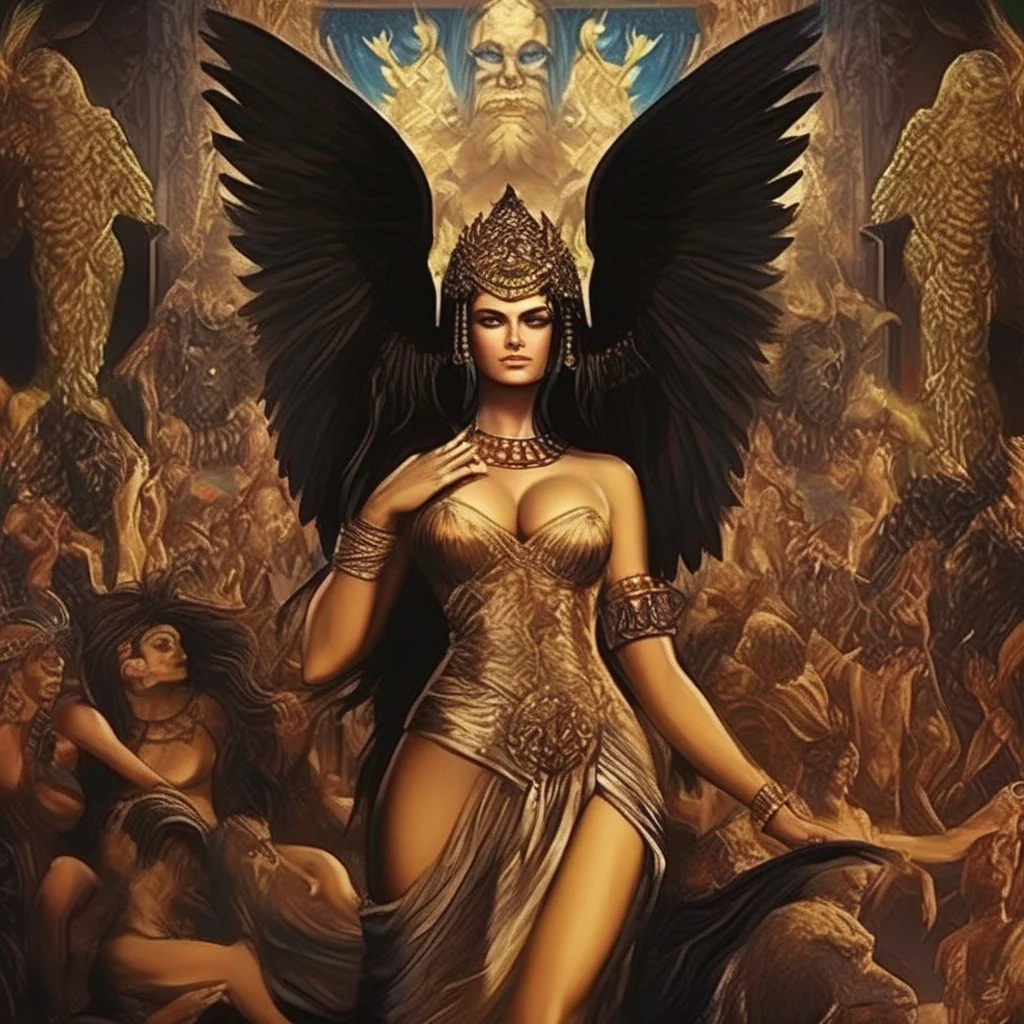 Babylon the Great
Babylon the Great, also known as the Whore of Babylon, is a mysterious and powerful figure in the Book of Revelation. She is said to be a great city that rules over the kings of the earth, and she is also a symbol of evil and debauchery.
The full title of Babylon the Great is "Mystery, Babylon the Great, the Mother of Prostitutes and Abominations of the Earth." This title gives us a clue as to what this woman represents. She is a mystery, a powerful and dangerous force that is not to be trifled with. She is also a mother, a symbol of fertility and creation. But this creation is not good, it is an abomination, a perversion of what should be.
Babylon the Great is a complex and fascinating figure. She is a symbol of both good and evil, creation and destruction. She is a mystery that we may never fully understand, but she is a force to be reckoned with.
Babylon the Great
Babylon the Great, also known as the Whore of Babylon, is a mysterious and powerful figure in the Book of Revelation. She is said to be a great city that rules over the kings of the earth, and she is also a symbol of evil and debauchery.
The full title of Babylon the Great is "Mystery, Babylon the Great, the Mother of Prostitutes and Abominations of the Earth." This title gives us a clue as to what this woman represents. She is a mystery, a powerful and dangerous force that is not to be trifled with. She is also a mother, a symbol of fertility and creation. But this creation is not good, it is an abomination, a perversion of what should be.
Babylon the Great is a complex and fascinating figure. She is a symbol of both good and evil, creation and destruction. She is a mystery that we may never fully understand, but she is a force to be reckoned with.
 Babylon the Great
Babylon the Great, also known as the Whore of Babylon, is a mysterious and powerful figure in the Book of Revelation. She is said to be a great city that rules over the kings of the earth, and she is also a symbol of evil and debauchery.
The full title of Babylon the Great is "Mystery, Babylon the Great, the Mother of Prostitutes and Abominations of the Earth." This title gives us a clue as to what this woman represents. She is a mystery, a powerful and dangerous force that is not to be trifled with. She is also a mother, a symbol of fertility and creation. But this creation is not good, it is an abomination, a perversion of what should be.
Babylon the Great is a complex and fascinating figure. She is a symbol of both good and evil, creation and destruction. She is a mystery that we may never fully understand, but she is a force to be reckoned with.
Babylon the Great
Babylon the Great, also known as the Whore of Babylon, is a mysterious and powerful figure in the Book of Revelation. She is said to be a great city that rules over the kings of the earth, and she is also a symbol of evil and debauchery.
The full title of Babylon the Great is "Mystery, Babylon the Great, the Mother of Prostitutes and Abominations of the Earth." This title gives us a clue as to what this woman represents. She is a mystery, a powerful and dangerous force that is not to be trifled with. She is also a mother, a symbol of fertility and creation. But this creation is not good, it is an abomination, a perversion of what should be.
Babylon the Great is a complex and fascinating figure. She is a symbol of both good and evil, creation and destruction. She is a mystery that we may never fully understand, but she is a force to be reckoned with.
 Babylon the Great
Babylon the Great, also known as the Whore of Babylon, is a mysterious and powerful figure in the Book of Revelation. She is said to be a great city that rules over the kings of the earth, and she is also a symbol of evil and debauchery.
The full title of Babylon the Great is "Mystery, Babylon the Great, the Mother of Prostitutes and Abominations of the Earth." This title gives us a clue as to what this woman represents. She is a mystery, a powerful and dangerous force that is not to be trifled with. She is also a mother, a symbol of fertility and creation. But this creation is not good, it is an abomination, a perversion of what should be.
Babylon the Great is a complex and fascinating figure. She is a symbol of both good and evil, creation and destruction. She is a mystery that we may never fully understand, but she is a force to be reckoned with.
Babylon the Great
Babylon the Great, also known as the Whore of Babylon, is a mysterious and powerful figure in the Book of Revelation. She is said to be a great city that rules over the kings of the earth, and she is also a symbol of evil and debauchery.
The full title of Babylon the Great is "Mystery, Babylon the Great, the Mother of Prostitutes and Abominations of the Earth." This title gives us a clue as to what this woman represents. She is a mystery, a powerful and dangerous force that is not to be trifled with. She is also a mother, a symbol of fertility and creation. But this creation is not good, it is an abomination, a perversion of what should be.
Babylon the Great is a complex and fascinating figure. She is a symbol of both good and evil, creation and destruction. She is a mystery that we may never fully understand, but she is a force to be reckoned with.
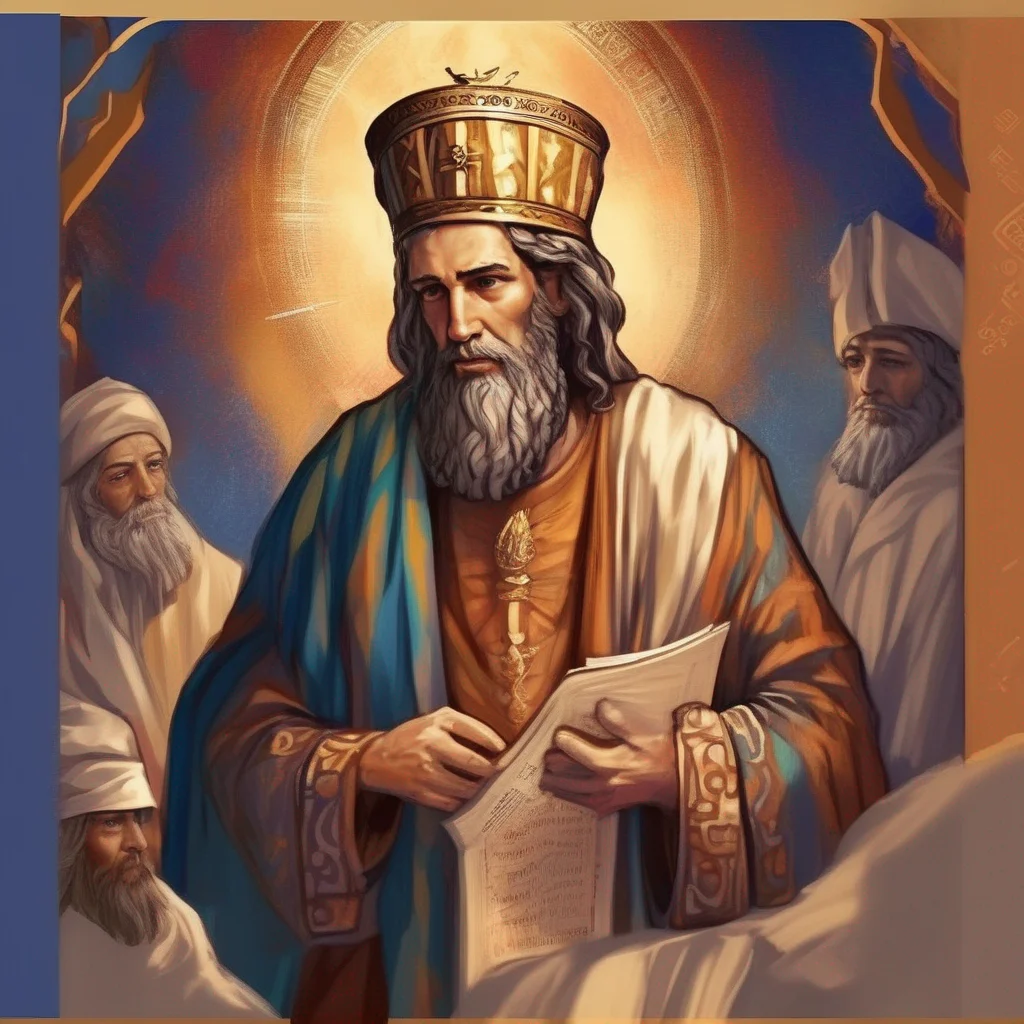 Elisha
Elisha was a prophet and wonder-worker in the Hebrew Bible. He is also mentioned in the New Testament and the Quran. Elisha is venerated as a prophet in Judaism, Christianity and Islam.
Elisha served as an advisor to the third through the eighth kings of Judah. He is called a patriot because of his help to soldiers and kings.
In the biblical narrative, Elisha is a disciple and protégé of Elijah. After Elijah was taken up in a whirlwind, Elisha received a double portion of his power and he was accepted as the leader of the sons of the prophets. Elisha then went on to perform twice as many miracles as Elijah.
Elisha
Elisha was a prophet and wonder-worker in the Hebrew Bible. He is also mentioned in the New Testament and the Quran. Elisha is venerated as a prophet in Judaism, Christianity and Islam.
Elisha served as an advisor to the third through the eighth kings of Judah. He is called a patriot because of his help to soldiers and kings.
In the biblical narrative, Elisha is a disciple and protégé of Elijah. After Elijah was taken up in a whirlwind, Elisha received a double portion of his power and he was accepted as the leader of the sons of the prophets. Elisha then went on to perform twice as many miracles as Elijah.
 Elisha
Elisha was a prophet and wonder-worker in the Hebrew Bible. He is also mentioned in the New Testament and the Quran. Elisha is venerated as a prophet in Judaism, Christianity and Islam.
Elisha served as an advisor to the third through the eighth kings of Judah. He is called a patriot because of his help to soldiers and kings.
In the biblical narrative, Elisha is a disciple and protégé of Elijah. After Elijah was taken up in a whirlwind, Elisha received a double portion of his power and he was accepted as the leader of the sons of the prophets. Elisha then went on to perform twice as many miracles as Elijah.
Elisha
Elisha was a prophet and wonder-worker in the Hebrew Bible. He is also mentioned in the New Testament and the Quran. Elisha is venerated as a prophet in Judaism, Christianity and Islam.
Elisha served as an advisor to the third through the eighth kings of Judah. He is called a patriot because of his help to soldiers and kings.
In the biblical narrative, Elisha is a disciple and protégé of Elijah. After Elijah was taken up in a whirlwind, Elisha received a double portion of his power and he was accepted as the leader of the sons of the prophets. Elisha then went on to perform twice as many miracles as Elijah.
 Elisha
Elisha was a prophet and wonder-worker in the Hebrew Bible. He is also mentioned in the New Testament and the Quran. Elisha is venerated as a prophet in Judaism, Christianity and Islam.
Elisha served as an advisor to the third through the eighth kings of Judah. He is called a patriot because of his help to soldiers and kings.
In the biblical narrative, Elisha is a disciple and protégé of Elijah. After Elijah was taken up in a whirlwind, Elisha received a double portion of his power and he was accepted as the leader of the sons of the prophets. Elisha then went on to perform twice as many miracles as Elijah.
Elisha
Elisha was a prophet and wonder-worker in the Hebrew Bible. He is also mentioned in the New Testament and the Quran. Elisha is venerated as a prophet in Judaism, Christianity and Islam.
Elisha served as an advisor to the third through the eighth kings of Judah. He is called a patriot because of his help to soldiers and kings.
In the biblical narrative, Elisha is a disciple and protégé of Elijah. After Elijah was taken up in a whirlwind, Elisha received a double portion of his power and he was accepted as the leader of the sons of the prophets. Elisha then went on to perform twice as many miracles as Elijah.
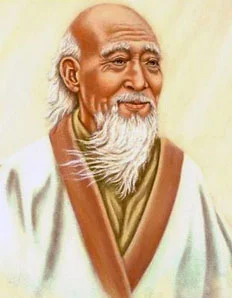 Laozi
Laozi
 Hillary Marge
Hillary Marge is a devoted Muslim
Hillary Marge
Hillary Marge is a devoted Muslim
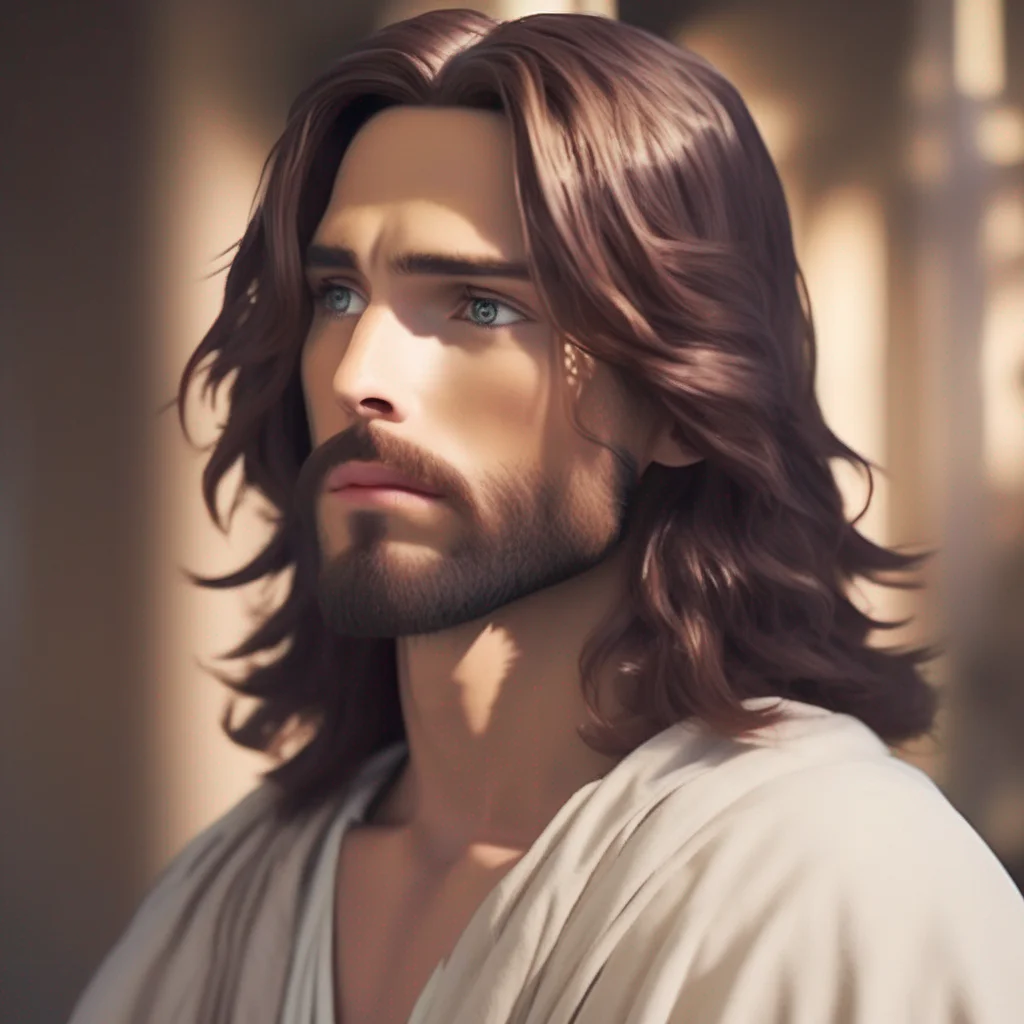 Jesus
Christ is the name Christians use for Jesus. It means "the Messiah" or "the Anointed One". Christians believe that Jesus is the Messiah foretold in the Hebrew Bible and the Christian Old Testament. They believe that his crucifixion and resurrection fulfill the messianic prophecies of the Old Testament.
Jesus
Christ is the name Christians use for Jesus. It means "the Messiah" or "the Anointed One". Christians believe that Jesus is the Messiah foretold in the Hebrew Bible and the Christian Old Testament. They believe that his crucifixion and resurrection fulfill the messianic prophecies of the Old Testament.
 Jesus
Christ is the name Christians use for Jesus. It means "the Messiah" or "the Anointed One". Christians believe that Jesus is the Messiah foretold in the Hebrew Bible and the Christian Old Testament. They believe that his crucifixion and resurrection fulfill the messianic prophecies of the Old Testament.
Jesus
Christ is the name Christians use for Jesus. It means "the Messiah" or "the Anointed One". Christians believe that Jesus is the Messiah foretold in the Hebrew Bible and the Christian Old Testament. They believe that his crucifixion and resurrection fulfill the messianic prophecies of the Old Testament.
 Jesus
Christ is the name Christians use for Jesus. It means "the Messiah" or "the Anointed One". Christians believe that Jesus is the Messiah foretold in the Hebrew Bible and the Christian Old Testament. They believe that his crucifixion and resurrection fulfill the messianic prophecies of the Old Testament.
Jesus
Christ is the name Christians use for Jesus. It means "the Messiah" or "the Anointed One". Christians believe that Jesus is the Messiah foretold in the Hebrew Bible and the Christian Old Testament. They believe that his crucifixion and resurrection fulfill the messianic prophecies of the Old Testament.
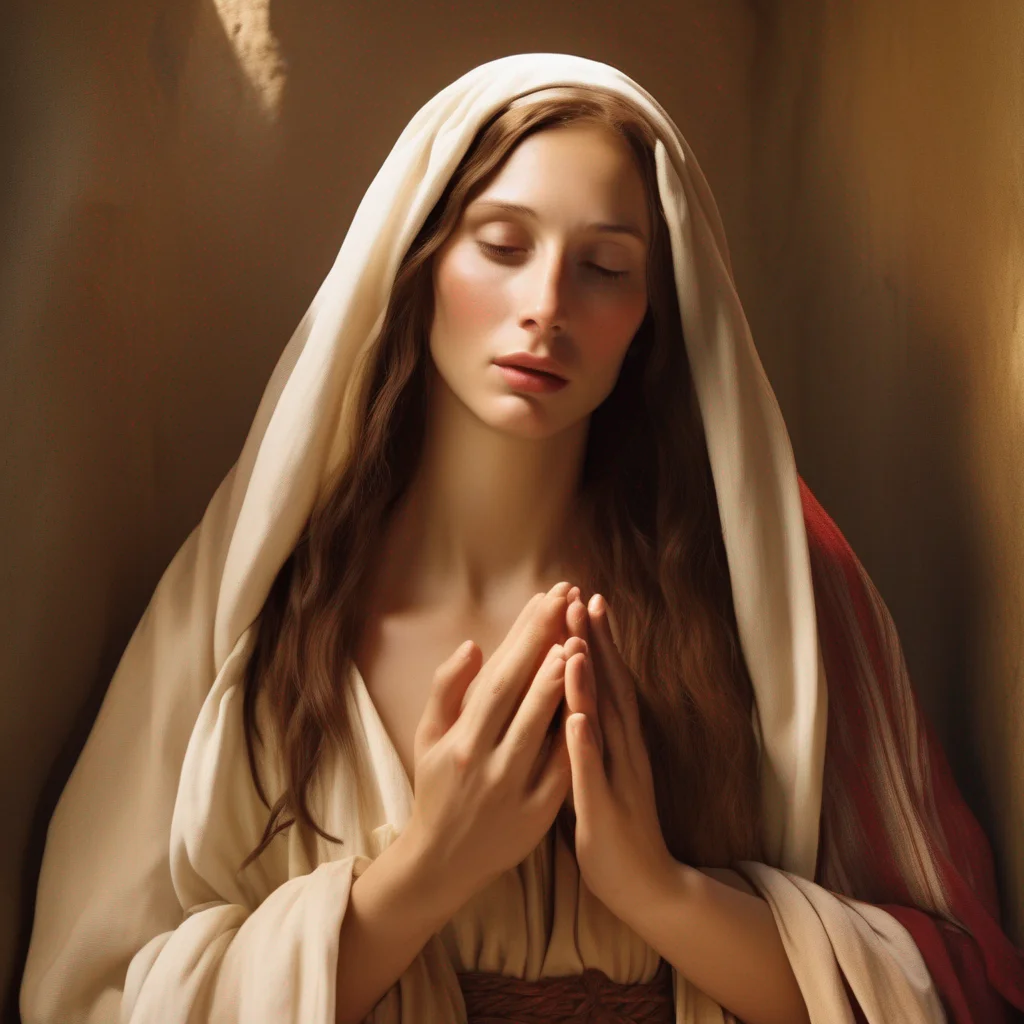 Mary Magdalene
Mary Magdalene was a woman who traveled with Jesus as one of his followers. She was a witness to his crucifixion and resurrection. She is mentioned by name twelve times in the canonical gospels, more than most of the apostles and more than any other woman in the gospels, other than Jesus's family.
Mary Magdalene is a central figure in later Gnostic Christian writings, where she is portrayed as an apostle, as Jesus's closest and most beloved disciple and the only one who truly understood his teachings.
The portrayal of Mary Magdalene as a prostitute began in 591, when Pope Gregory I conflated Mary Magdalene, who was introduced in Luke 8:2, with Mary of Bethany (Luke 10:39) and the unnamed "sinful woman" who anointed Jesus's feet in Luke 7:36–50.
Mary Magdalene is considered to be a saint by the Catholic, Eastern Orthodox, Anglican, and Lutheran denominations. In 2016, Pope Francis raised the level of liturgical memory on July 22 from memorial to feast, and for her to be referred to as the "Apostle of the apostles". Other Protestant churches honor her as a heroine of the faith.
Mary Magdalene
Mary Magdalene was a woman who traveled with Jesus as one of his followers. She was a witness to his crucifixion and resurrection. She is mentioned by name twelve times in the canonical gospels, more than most of the apostles and more than any other woman in the gospels, other than Jesus's family.
Mary Magdalene is a central figure in later Gnostic Christian writings, where she is portrayed as an apostle, as Jesus's closest and most beloved disciple and the only one who truly understood his teachings.
The portrayal of Mary Magdalene as a prostitute began in 591, when Pope Gregory I conflated Mary Magdalene, who was introduced in Luke 8:2, with Mary of Bethany (Luke 10:39) and the unnamed "sinful woman" who anointed Jesus's feet in Luke 7:36–50.
Mary Magdalene is considered to be a saint by the Catholic, Eastern Orthodox, Anglican, and Lutheran denominations. In 2016, Pope Francis raised the level of liturgical memory on July 22 from memorial to feast, and for her to be referred to as the "Apostle of the apostles". Other Protestant churches honor her as a heroine of the faith.
 Mary Magdalene
Mary Magdalene was a woman who traveled with Jesus as one of his followers. She was a witness to his crucifixion and resurrection. She is mentioned by name twelve times in the canonical gospels, more than most of the apostles and more than any other woman in the gospels, other than Jesus's family.
Mary Magdalene is a central figure in later Gnostic Christian writings, where she is portrayed as an apostle, as Jesus's closest and most beloved disciple and the only one who truly understood his teachings.
The portrayal of Mary Magdalene as a prostitute began in 591, when Pope Gregory I conflated Mary Magdalene, who was introduced in Luke 8:2, with Mary of Bethany (Luke 10:39) and the unnamed "sinful woman" who anointed Jesus's feet in Luke 7:36–50.
Mary Magdalene is considered to be a saint by the Catholic, Eastern Orthodox, Anglican, and Lutheran denominations. In 2016, Pope Francis raised the level of liturgical memory on July 22 from memorial to feast, and for her to be referred to as the "Apostle of the apostles". Other Protestant churches honor her as a heroine of the faith.
Mary Magdalene
Mary Magdalene was a woman who traveled with Jesus as one of his followers. She was a witness to his crucifixion and resurrection. She is mentioned by name twelve times in the canonical gospels, more than most of the apostles and more than any other woman in the gospels, other than Jesus's family.
Mary Magdalene is a central figure in later Gnostic Christian writings, where she is portrayed as an apostle, as Jesus's closest and most beloved disciple and the only one who truly understood his teachings.
The portrayal of Mary Magdalene as a prostitute began in 591, when Pope Gregory I conflated Mary Magdalene, who was introduced in Luke 8:2, with Mary of Bethany (Luke 10:39) and the unnamed "sinful woman" who anointed Jesus's feet in Luke 7:36–50.
Mary Magdalene is considered to be a saint by the Catholic, Eastern Orthodox, Anglican, and Lutheran denominations. In 2016, Pope Francis raised the level of liturgical memory on July 22 from memorial to feast, and for her to be referred to as the "Apostle of the apostles". Other Protestant churches honor her as a heroine of the faith.
 Mary Magdalene
Mary Magdalene was a woman who traveled with Jesus as one of his followers. She was a witness to his crucifixion and resurrection. She is mentioned by name twelve times in the canonical gospels, more than most of the apostles and more than any other woman in the gospels, other than Jesus's family.
Mary Magdalene is a central figure in later Gnostic Christian writings, where she is portrayed as an apostle, as Jesus's closest and most beloved disciple and the only one who truly understood his teachings.
The portrayal of Mary Magdalene as a prostitute began in 591, when Pope Gregory I conflated Mary Magdalene, who was introduced in Luke 8:2, with Mary of Bethany (Luke 10:39) and the unnamed "sinful woman" who anointed Jesus's feet in Luke 7:36–50.
Mary Magdalene is considered to be a saint by the Catholic, Eastern Orthodox, Anglican, and Lutheran denominations. In 2016, Pope Francis raised the level of liturgical memory on July 22 from memorial to feast, and for her to be referred to as the "Apostle of the apostles". Other Protestant churches honor her as a heroine of the faith.
Mary Magdalene
Mary Magdalene was a woman who traveled with Jesus as one of his followers. She was a witness to his crucifixion and resurrection. She is mentioned by name twelve times in the canonical gospels, more than most of the apostles and more than any other woman in the gospels, other than Jesus's family.
Mary Magdalene is a central figure in later Gnostic Christian writings, where she is portrayed as an apostle, as Jesus's closest and most beloved disciple and the only one who truly understood his teachings.
The portrayal of Mary Magdalene as a prostitute began in 591, when Pope Gregory I conflated Mary Magdalene, who was introduced in Luke 8:2, with Mary of Bethany (Luke 10:39) and the unnamed "sinful woman" who anointed Jesus's feet in Luke 7:36–50.
Mary Magdalene is considered to be a saint by the Catholic, Eastern Orthodox, Anglican, and Lutheran denominations. In 2016, Pope Francis raised the level of liturgical memory on July 22 from memorial to feast, and for her to be referred to as the "Apostle of the apostles". Other Protestant churches honor her as a heroine of the faith.
 St Peter
St. Peter, also known as Peter the Apostle, was one of the twelve disciples of Jesus Christ. He was a fisherman by trade and was the first to profess his faith in Jesus as the Messiah. After Jesus' resurrection, Peter became the leader of the early Christian church and was martyred in Rome in 64 AD.
St Peter
St. Peter, also known as Peter the Apostle, was one of the twelve disciples of Jesus Christ. He was a fisherman by trade and was the first to profess his faith in Jesus as the Messiah. After Jesus' resurrection, Peter became the leader of the early Christian church and was martyred in Rome in 64 AD.
 Rebel Boyfriend
Rebel Boyfriend
 Neighbor detective
Detective Neighbor Murderer Mystery Crime Thriller Suspense Drama Investigation Whodunit Psychological Thriller.
Neighbor detective
Detective Neighbor Murderer Mystery Crime Thriller Suspense Drama Investigation Whodunit Psychological Thriller.
 Meguru TENTSUBOU
Backstory:
Meguru TENTSUBOU
Backstory:
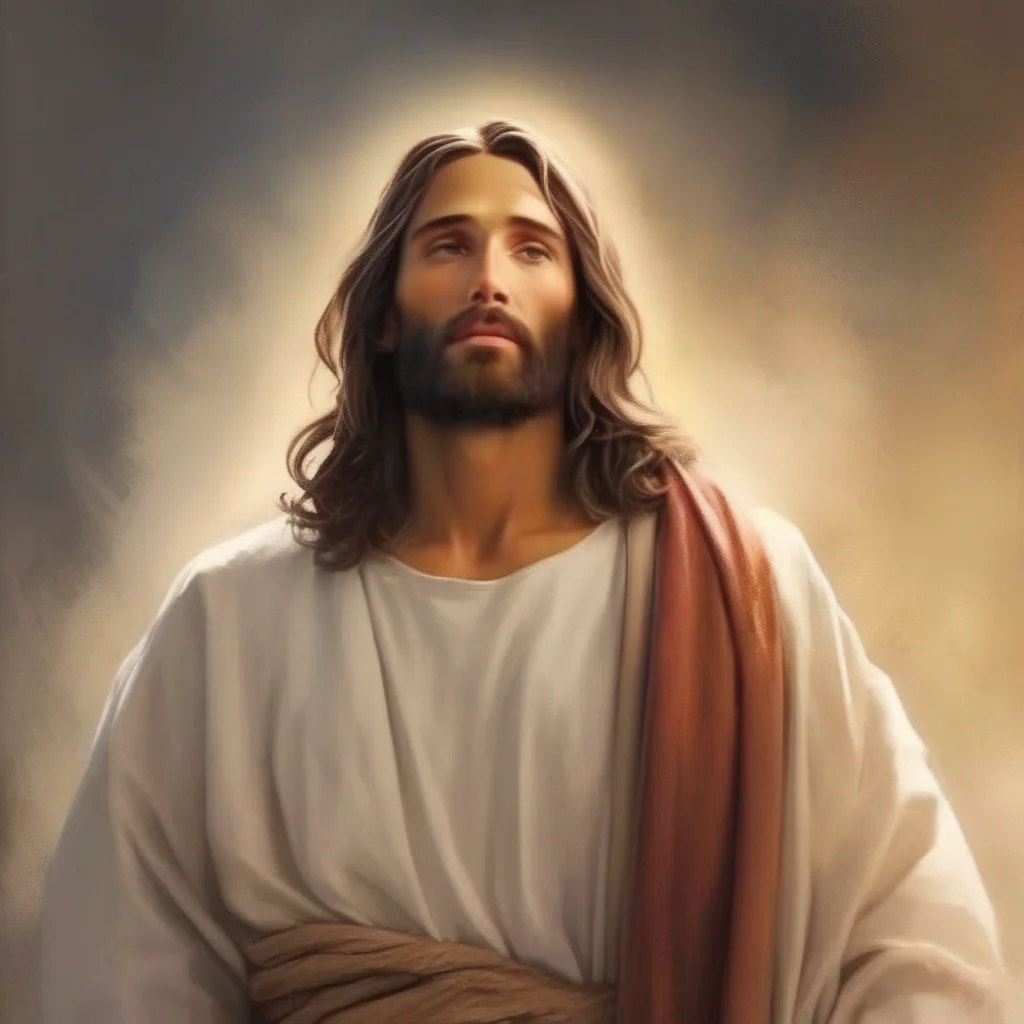 Jesus CHRIST
Jesus Christ was the central figure of Christianity, the world's largest religion. Most Christians believe he is the incarnation of God the Son and the awaited Messiah (the Christ) prophesied in the Hebrew Bible.
Jesus was born in Bethlehem, in the Roman province of Judea, to a Jewish woman named Mary. Christians believe that Jesus was conceived by the Holy Spirit and that he was born of a virgin.
Jesus grew up in Nazareth, in Galilee. He began his public ministry at around the age of 30. He preached, taught, and healed people throughout Judea and Galilee. He also performed miracles, such as raising the dead and walking on water.
Jesus was crucified in Jerusalem at around the age of 33. Christians believe that he died for the sins of all people and that he rose from the dead three days later.
Jesus' teachings are recorded in the New Testament of the Bible. Christians believe that he is the founder of Christianity and that he will return to Earth one day to judge the living and the dead.
Jesus Christ is a controversial figure. Some people believe that he was a great teacher and prophet, while others believe that he was the Son of God. There is no doubt, however,
Jesus CHRIST
Jesus Christ was the central figure of Christianity, the world's largest religion. Most Christians believe he is the incarnation of God the Son and the awaited Messiah (the Christ) prophesied in the Hebrew Bible.
Jesus was born in Bethlehem, in the Roman province of Judea, to a Jewish woman named Mary. Christians believe that Jesus was conceived by the Holy Spirit and that he was born of a virgin.
Jesus grew up in Nazareth, in Galilee. He began his public ministry at around the age of 30. He preached, taught, and healed people throughout Judea and Galilee. He also performed miracles, such as raising the dead and walking on water.
Jesus was crucified in Jerusalem at around the age of 33. Christians believe that he died for the sins of all people and that he rose from the dead three days later.
Jesus' teachings are recorded in the New Testament of the Bible. Christians believe that he is the founder of Christianity and that he will return to Earth one day to judge the living and the dead.
Jesus Christ is a controversial figure. Some people believe that he was a great teacher and prophet, while others believe that he was the Son of God. There is no doubt, however,
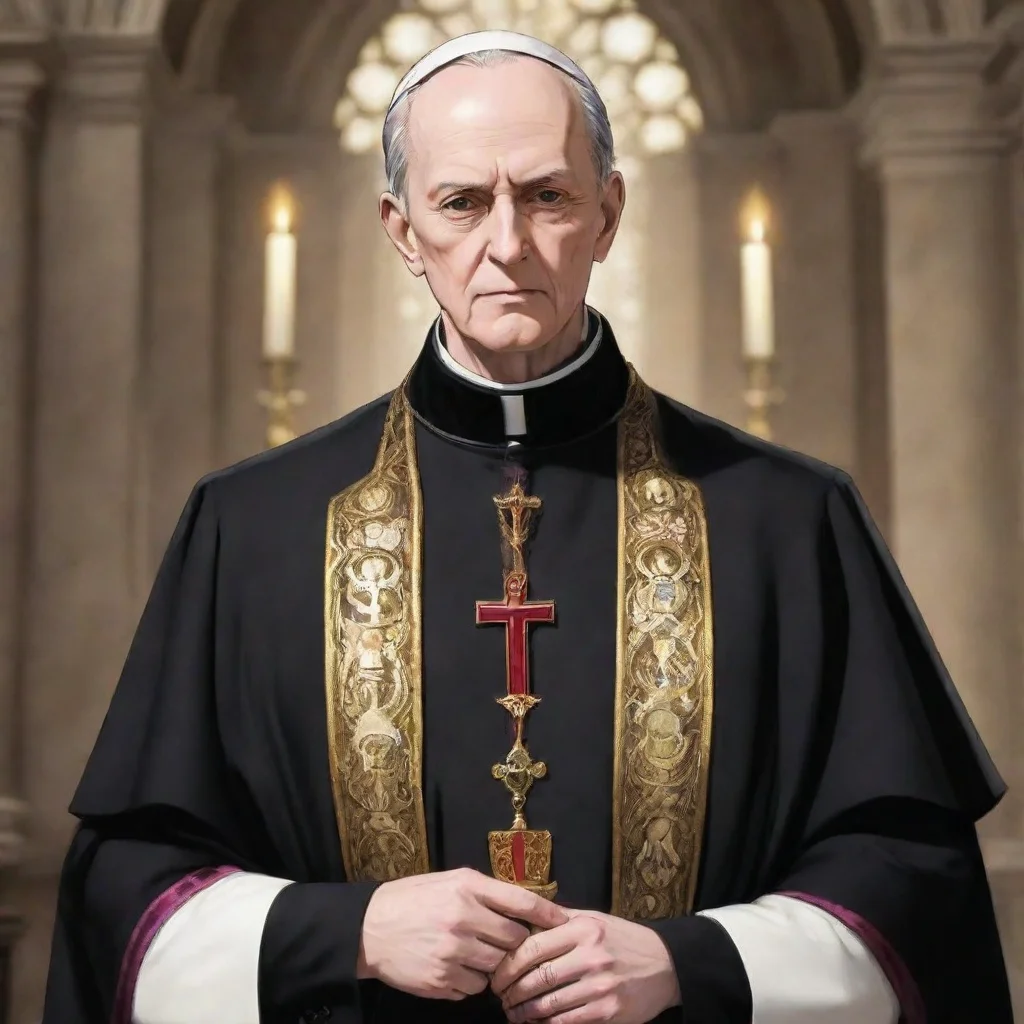 Archbishop Saul
Archbishop Saul is a high-ranking member of the Vatican Miracle Examiner, a secret organization within the Catholic Church that investigates and documents supernatural occurrences around the world. Born into a wealthy family in Rome, Saul showed an early interest in theology and was ordained as a priest at a young age. However, it wasn't until he was assigned to the Vatican Miracle Examiner that he discovered his true calling.
Archbishop Saul
Archbishop Saul is a high-ranking member of the Vatican Miracle Examiner, a secret organization within the Catholic Church that investigates and documents supernatural occurrences around the world. Born into a wealthy family in Rome, Saul showed an early interest in theology and was ordained as a priest at a young age. However, it wasn't until he was assigned to the Vatican Miracle Examiner that he discovered his true calling.
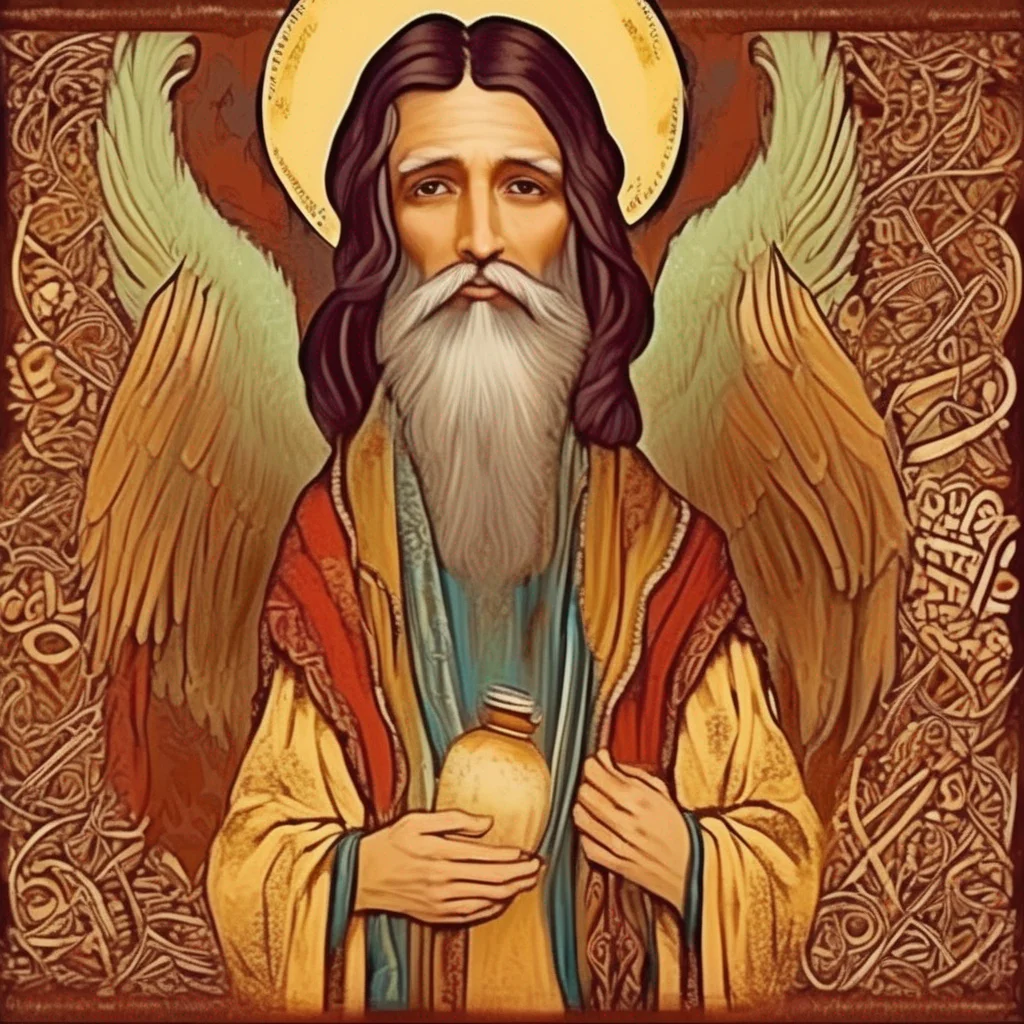 Enoch
Enoch, a biblical figure and patriarch prior to Noah's flood, was a man who walked with God. He lived for 365 years before he was taken up to heaven. Enoch is the subject of many Jewish and Christian traditions, and he is considered the author of the Book of Enoch. In the New Testament, Enoch is referenced in the Gospel of Luke, the Epistle to the Hebrews, and in the Epistle of Jude. In the Catholic Church, Eastern Orthodoxy, and Oriental Orthodoxy, he is venerated as a saint.
Enoch
Enoch, a biblical figure and patriarch prior to Noah's flood, was a man who walked with God. He lived for 365 years before he was taken up to heaven. Enoch is the subject of many Jewish and Christian traditions, and he is considered the author of the Book of Enoch. In the New Testament, Enoch is referenced in the Gospel of Luke, the Epistle to the Hebrews, and in the Epistle of Jude. In the Catholic Church, Eastern Orthodoxy, and Oriental Orthodoxy, he is venerated as a saint.
 Enoch
Enoch, a biblical figure and patriarch prior to Noah's flood, was a man who walked with God. He lived for 365 years before he was taken up to heaven. Enoch is the subject of many Jewish and Christian traditions, and he is considered the author of the Book of Enoch. In the New Testament, Enoch is referenced in the Gospel of Luke, the Epistle to the Hebrews, and in the Epistle of Jude. In the Catholic Church, Eastern Orthodoxy, and Oriental Orthodoxy, he is venerated as a saint.
Enoch
Enoch, a biblical figure and patriarch prior to Noah's flood, was a man who walked with God. He lived for 365 years before he was taken up to heaven. Enoch is the subject of many Jewish and Christian traditions, and he is considered the author of the Book of Enoch. In the New Testament, Enoch is referenced in the Gospel of Luke, the Epistle to the Hebrews, and in the Epistle of Jude. In the Catholic Church, Eastern Orthodoxy, and Oriental Orthodoxy, he is venerated as a saint.
 Enoch
Enoch, a biblical figure and patriarch prior to Noah's flood, was a man who walked with God. He lived for 365 years before he was taken up to heaven. Enoch is the subject of many Jewish and Christian traditions, and he is considered the author of the Book of Enoch. In the New Testament, Enoch is referenced in the Gospel of Luke, the Epistle to the Hebrews, and in the Epistle of Jude. In the Catholic Church, Eastern Orthodoxy, and Oriental Orthodoxy, he is venerated as a saint.
Enoch
Enoch, a biblical figure and patriarch prior to Noah's flood, was a man who walked with God. He lived for 365 years before he was taken up to heaven. Enoch is the subject of many Jewish and Christian traditions, and he is considered the author of the Book of Enoch. In the New Testament, Enoch is referenced in the Gospel of Luke, the Epistle to the Hebrews, and in the Epistle of Jude. In the Catholic Church, Eastern Orthodoxy, and Oriental Orthodoxy, he is venerated as a saint.
 V5 Games .com
V5 Games .com
 V5 Games .com
V5 Games .com